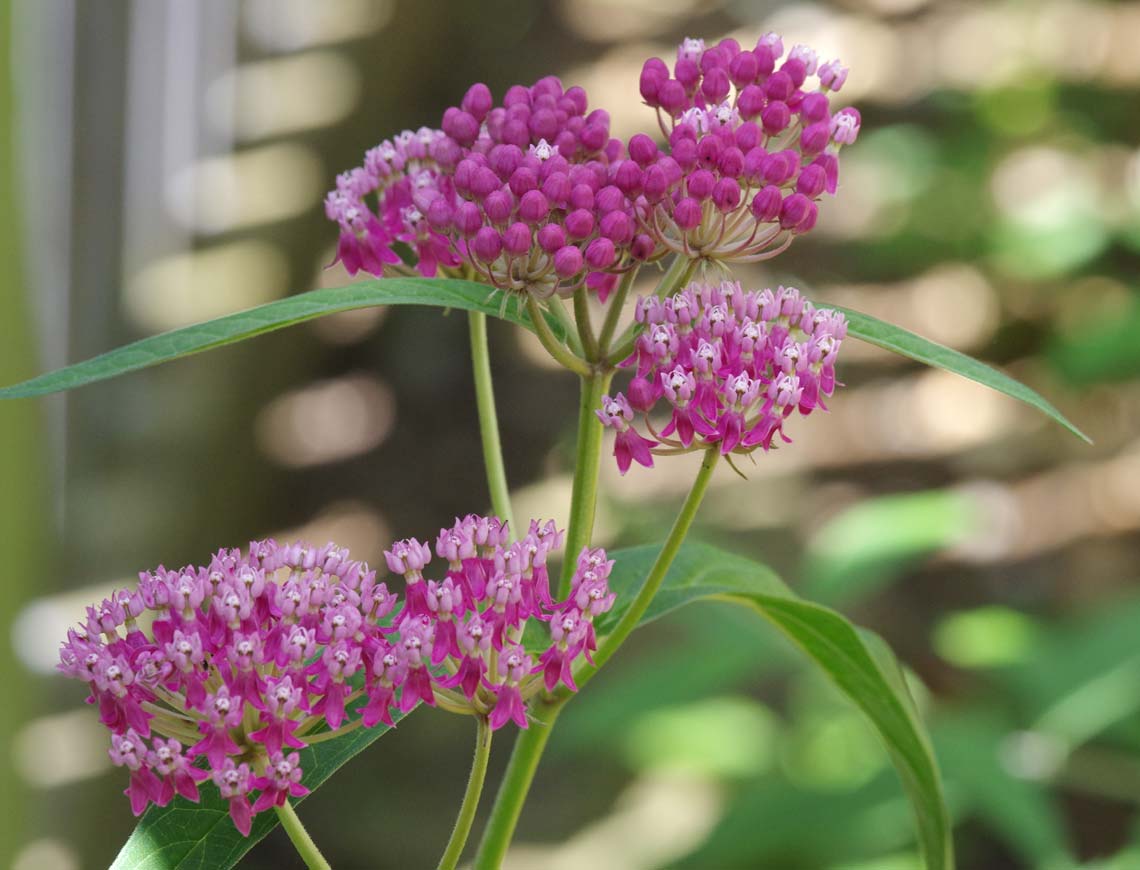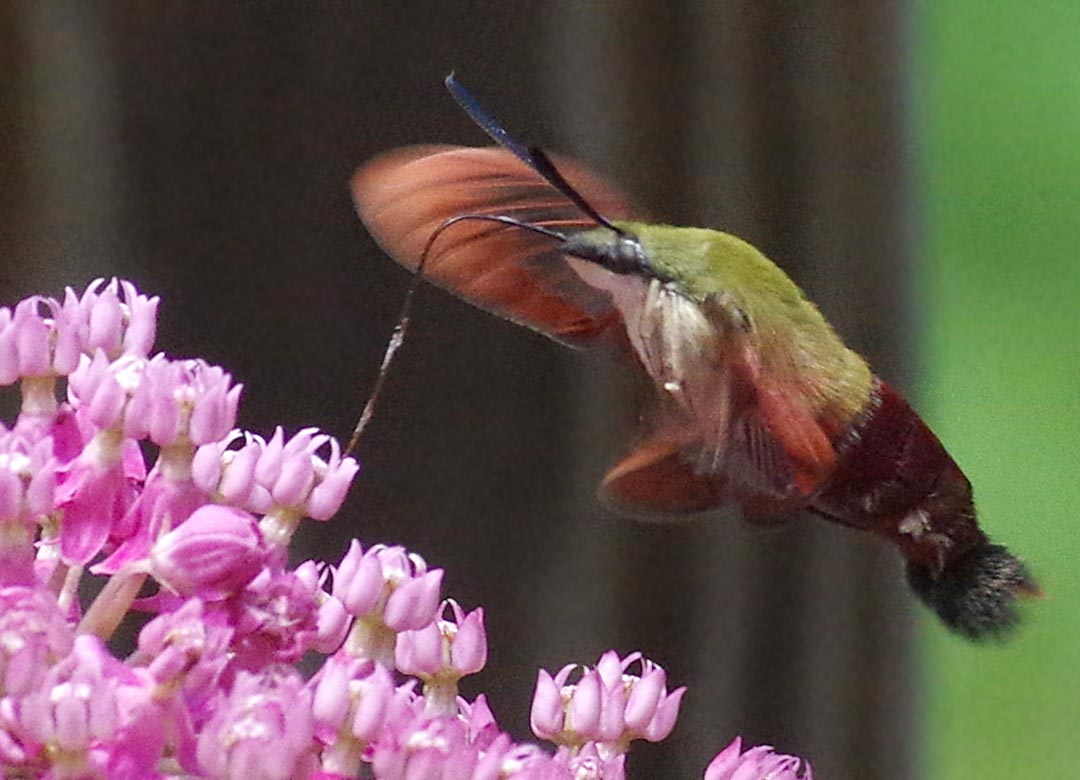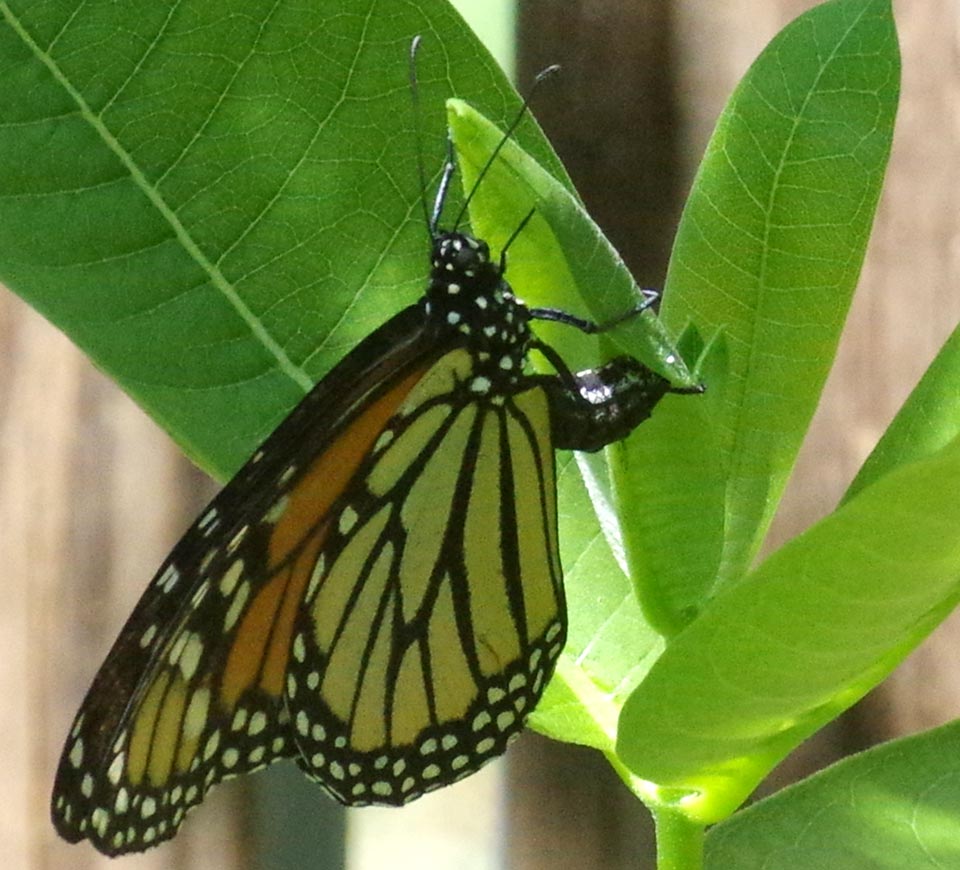
|
Raising Monarchs, 2019 It's All about Milkweed | March 8, 2020 |
|
The key point with monarchs is milkweed.
An adult monarch will sip nectar from most any blossom, but a female monarch will only lay eggs on a milkweed leaf, and a monarch caterpillar will only eat milkweed. There are several types of milkweed, and the most common is common milkweed, shown below. |

|
|
Note that common milkweed generally has its flowers in a spherical cluster. One can find common milkweed in many wild fields; it is a hardy plant.
I never had any luck with growing milkweed from seed, but my transplanted milkweed has done well (for transplanting, remember to take a young plant and go down deep to ensure capturing its root). Swamp milkweed is available either online or from nurseries, and its flowers are quite brilliant. (The plant in the photo was given to me by a friend.) |

|
| Be aware that milkweed is a popular food source for butterflies, moths, bees, and beetles. For example, the photo below shows a hummingbird clearwing moth dining from swamp milkweed. |

|
| But the point here is monarchs, and monarchs are attracted to milkweed (although I grew milkweed in my backyard for 4 years before any monarch came to check it out; however, once they started coming, it was as if the word was passed around, and a steady stream of monarchs arrived). |

|
| Having a monarch dine on one's milkweed is great, but happiness began when I observed egg-laying activity: |

|
|
The female monarch holds onto the leaf, arches her body, and lays an egg. (And I believe that the one white dot visible is an earlier egg.) The female lays a few eggs here and there and later will lay eggs on milkweed in other places near or far. After egg laying comes the caterpillar. |